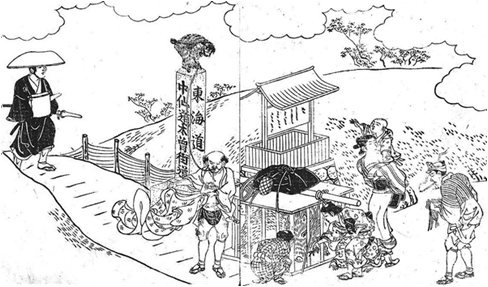- Home
- > Study Groups and their Achievements
- > Group 1:Systematization of Illustrated Materials and Its Dissemination
- > Task 2
Study Groups and Achievements
Systematization of Illustrated Materials and Its Dissemination
Task 2: Compilation of Pictopedia of Everyday Life in Early Modern Japan
- Research Process
- │
- Research Results
Emulating the great success of Pictopedia of Everyday Life in Medieval Japan, we aimed to compile pictorial references of daily life in early modern and modern times – a feat which the Institute for the Study of Japanese Folk Culture was not able to accomplish. Though we had initially planned to work on both eras simultaneously, we actually concentrated on early modern times and saved the other period for a future opportunity, since potential issues emerged as we formulated a detailed plan.
Our original plan was to compile three volumes of pictorial references on daily life in three regions in early modern Japan: Hokkaido and Yezo (northern part of Meiji-era Japan), the mainland and the Ryukyu Islands. We started our compilation work by identifying where pictorial materials about Hokkaido and Yezo could be found, gathering illustrations and selecting ones appropriate for the pictopedia. We mainly used drawings by Masumi Sugae, a scholar of the Edo era. For the volume on the Ryukyu region, we looked into where relevant materials were stored, but found it impossible to proceed with the task in parallel with the former volume. Thus, we decided to finish up the Hokkaido and Yezo volume first.
In compiling the volume on the mainland, how we should go about sorting an enormous amount of resources available and arranging them into a pictorial reference became a vital issue. After careful consideration, we agreed to use illustrations owned by the Institute for the Study of Japanese Folk Culture. However, we changed our plan and decided to compile a pictorial reference about Hokuriku, the northwestern region along the Sea of Japan, based on Nogyo Zue “Pictures of Farmers and Their Lives”, which contains more expressive depictions of daily life in that era. Moreover, we worked to compile yet another pictopedia based on Tokaido Meisho Zue “Guide to Famous Tokaido Sites”, a project which our 21st Century COE program had won. After all, we had compiled pictorial references on Hokkaido and Yezo, the Hokuriku region and the Tokaido region.
After the model of Pictopedia of Everyday Life in Medieval Japan, we selected illustrations capturing the life and culture of the era accurately, zooming in on objects and actions captured, assigning numbers to them and adding captions. Since we used drawings produced during the era, we did our utmost to choose words and expressions used back then for captions. This was much harder than we had expected. In many cases, it was impossible to figure out what a given object or action was called in a particular region during the era. When faced with such difficulty, we had no choice but to use present terms. In addition, coming up with appropriate terms to express the life and culture of Ainu people was a struggle. However, we tackled the problem through joint research. We invited lecturers to our meetings and conducted field surveys. We also took a careful look at all materials and sought advice from experts in the field.

